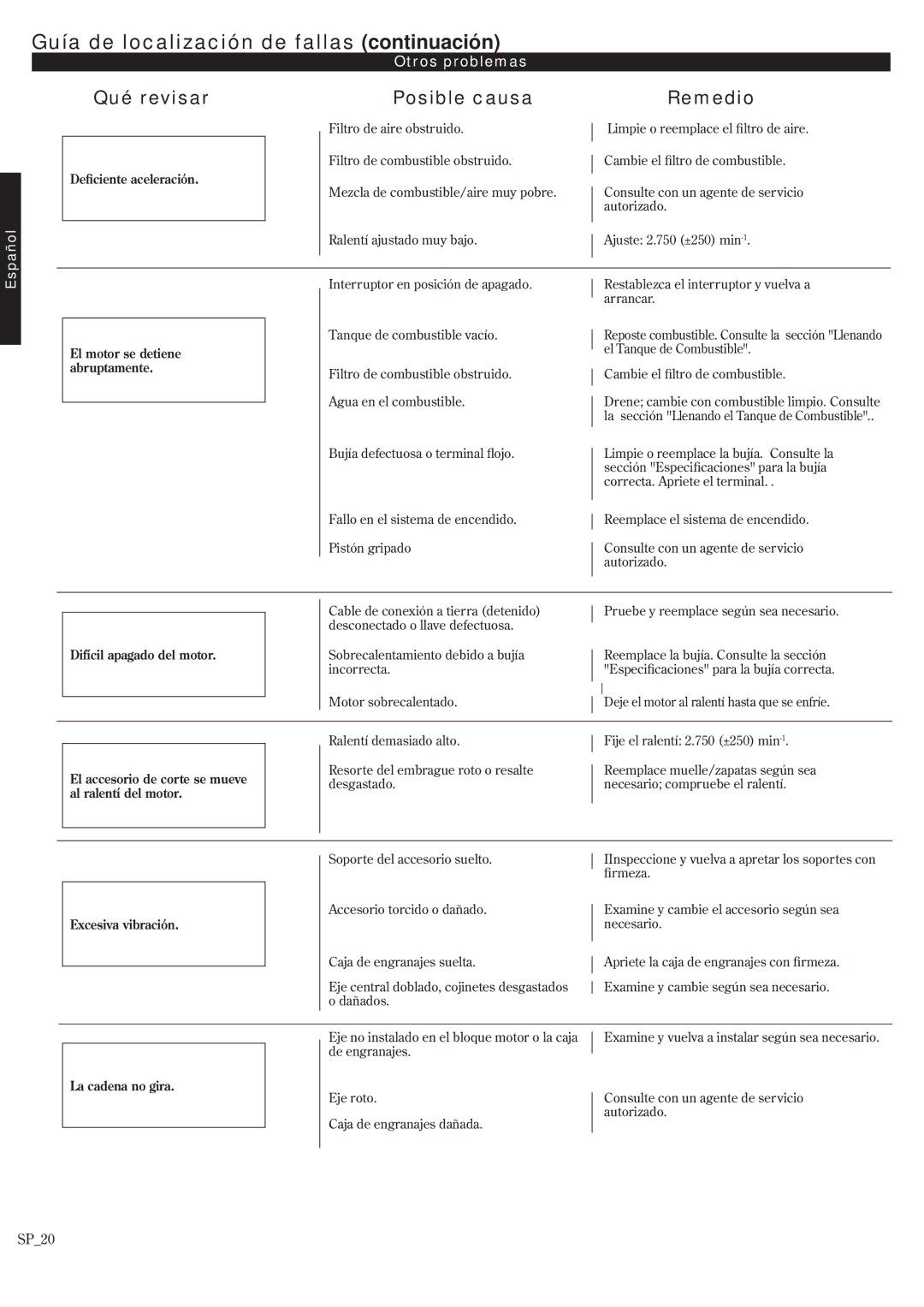P231, 62888-94013 specifications
Shindaiwa has long been recognized for its commitment to quality in outdoor power equipment, and the model 62888-94013, specifically the P231, is no exception. This efficient and robust handheld blower is designed for both professionals and homeowners who demand reliable performance for leaf and debris management.One of the standout features of the Shindaiwa P231 is its impressive air velocity. With a maximum air speed of 175 mph, this blower can tackle even the most stubborn leaves and debris with ease. This powerful airflow is complemented by a lightweight design, making it easy to maneuver even during extended use. Weighing just around 9.8 lbs, the P231 minimizes operator fatigue, allowing for longer periods of operation without discomfort.
Powering the P231 is a reliable 23.9 cc two-stroke engine, engineered for efficient fuel consumption and reduced emissions. This engine technology not only adheres to environmental standards but also provides a perfect balance of power and efficiency. The use of Shindaiwa’s proprietary engine design ensures that the blower can perform consistently regardless of the conditions, whether it’s wet leaves in the fall or light debris in the spring.
Another noteworthy feature of the P231 is its durable construction. Built with high-quality materials, the blower is designed to withstand the rigors of frequent use. The ergonomic handle is designed for comfort, ensuring a secure grip that reduces vibration and enhances control during operation. Furthermore, the blower includes a user-friendly start system that makes kick-starting the engine a hassle-free experience.
Shindaiwa also prioritizes ease of maintenance in the P231 model. It is equipped with a simple air filter access and a fuel tank designed for easy refueling. This attention to user-friendliness ensures that you can keep your equipment in top condition with minimal effort.
In summary, the Shindaiwa 62888-94013 P231 is a dynamic handheld blower that combines power, efficiency, and durability. Ideal for both professional landscapers and homeowners, its features like high air velocity, quality engine technology, lightweight design, and ease of maintenance make it an excellent choice for effective outdoor cleanup. Whether it’s for a large property or routine yard work, the P231 delivers reliability and outstanding performance every time.

